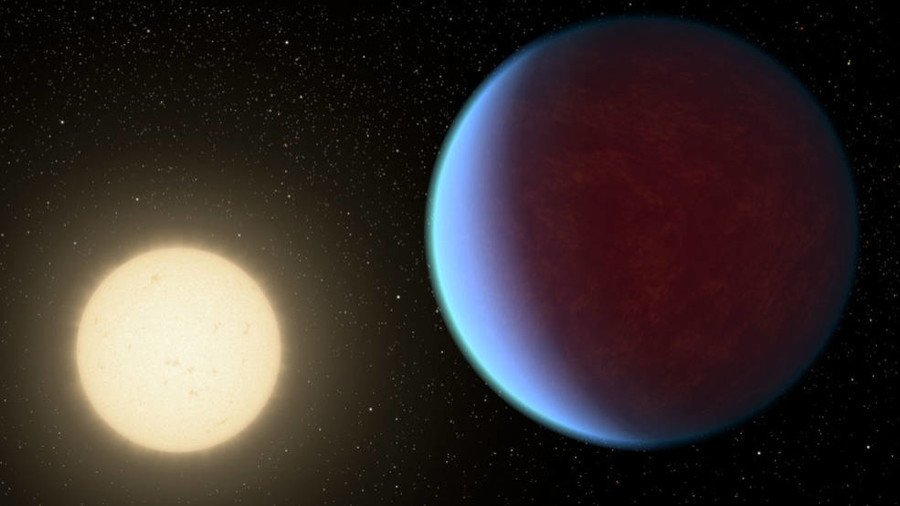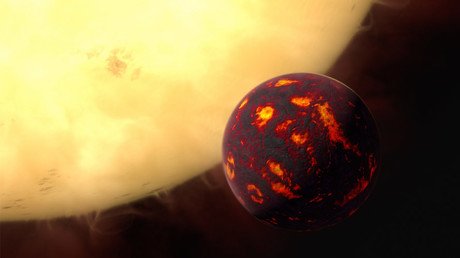Scientists have been fascinated by the exoplanet 55 Cancri e since its discovery more than a decade ago, now new research has suggested that it may have an atmosphere similar to Earth’s.
55 Cancri e is twice the size of our own planet and it lies around 40 light years away. The exoplanet is so close to its star that it is tidally locked with one of its sides is permanently facing the star while the other side faces away.
A new study published in The Astronomical Journal has found that it has an atmosphere similar to Earth’s with nitrogen and oxygen present. However the atmosphere is “thicker” and the temperature is much higher.
The exoplanet, which was discovered in 2004, is a so-called “super Earth,” which simply means that it has a greater mass than our planet.
Based on data from NASA’s Spitzer telescope scientists previously speculated that the planet may be largely covered in lava. Now a new analysis of that data has shed light on that claim.
“If there is lava on this planet, it would need to cover the entire surface,” one of the authors of the study, Renyu Hu from NASA's Jet Propulsion Laboratory, said, “but the lava would be hidden from our view by the thick atmosphere.”
The researchers also found that the cold side of the planet is not as cool as previously thought.
The “night” side is still scorching by Earth’s standards, with an average temperature of 2,400 to 2,600 degrees Fahrenheit (1,300 to 1,400 Celsius). Meanwhile the hot side averages 4,200 degrees Fahrenheit (2,300 Celsius).
This temperature difference allowed the scientists to draw conclusions about the planet’s atmosphere as the difference would be greater if there were no atmosphere on 55 Cancri e.
“Scientists have been debating whether this planet has an atmosphere like Earth and Venus, or just a rocky core and no atmosphere, like Mercury. The case for an atmosphere is now stronger than ever,” Hu said.
Despite its atmosphere the intense heat from the planet’s star is far too great to allow it to support life and it could not maintain liquid water.
Researchers are still left with many lingering questions about the mysterious planet, particularly why the atmosphere not been stripped away by the radiation coming from its star.
Hu said that unravelling these questions will help us address larger questions about the evolution of rocky planets.


